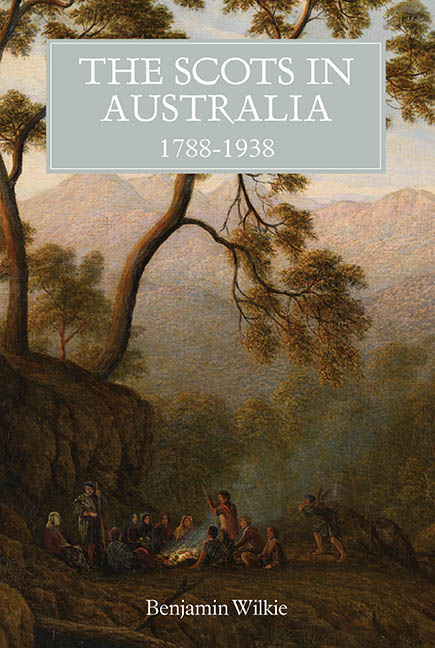Book contents
- Frontmatter
- Contents
- Illustrations
- Acknowledgements
- Abbreviations
- Introduction
- 1 From Scotland to Australia: Convicts, Free Settlers, and Encounters with Australia
- 2 Caledonia Australis: Imperial Commerce, Migrant Networks, and Australian Pastoralism
- 3 Scottish Migrants and Indigenous Australians
- 4 Imagining Home: Scottish Culture in Australia
- 5 Warriors of Empire: A Case Study of Popular Imperialism
- 6 The Empire Builders: Imperial Commerce and Migration between the Wars
- 7 New Scots: Industry, Settlement, and Working-Class Migration
- 8 At The Edge of Scotland's Diaspora: Diversity and Tension in the Twentieth Century
- Conclusion: The Imperial Legacy
- Bibliography
- Index
7 - New Scots: Industry, Settlement, and Working-Class Migration
Published online by Cambridge University Press: 23 August 2019
- Frontmatter
- Contents
- Illustrations
- Acknowledgements
- Abbreviations
- Introduction
- 1 From Scotland to Australia: Convicts, Free Settlers, and Encounters with Australia
- 2 Caledonia Australis: Imperial Commerce, Migrant Networks, and Australian Pastoralism
- 3 Scottish Migrants and Indigenous Australians
- 4 Imagining Home: Scottish Culture in Australia
- 5 Warriors of Empire: A Case Study of Popular Imperialism
- 6 The Empire Builders: Imperial Commerce and Migration between the Wars
- 7 New Scots: Industry, Settlement, and Working-Class Migration
- 8 At The Edge of Scotland's Diaspora: Diversity and Tension in the Twentieth Century
- Conclusion: The Imperial Legacy
- Bibliography
- Index
Summary
Before the Australian Scottish delegation departed, its president proclaimed, ‘We stand for Scotland but we stand for Australia!’ Indeed, the delegation of 1928 serves as an excellent illustration of both the 1920s spirit of expansion in Australia and the idealisation of Scots as Empire builders. The delegation saw in Scotland the labour, capital, and markets required for the economic development of the nation, and was a final effort to enforce Stanley Bruce's programme of British men, money, and markets before Labor and the Great Depression brought an end to high immi¬gration and costly land settlement schemes. This episode in Australian commercial and migration history was a uniquely Scottish microcosm of a broader movement in Australia to revitalise imperial links during the interwar years. In the commercial sphere, at the very least, the Scottish delegation evidently succeeded in boosting imperial trade between Australia and Scotland.
Moreover, the imperial rhetoric surrounding trade and commerce, and the selec¬tion of migrants of the ‘right type’, indicated the kinds of individuals who the dele¬gates understood as belonging properly to the Scottish diaspora in Australia. By the 1920s, the maintenance of Scottish culture in Australia was largely in the hands of older, rural, and often conservative Scots and their descendants. Between 1905 and 1935, for example, the Victorian Scottish Union held most of its annual conferences outside of cities, and the majority of its affiliated Scottish organisations, forty of the forty-five societies, were based in country areas. Within the 1928 Australian Scottish delegation, in all states but Victoria and Western Australia, individuals from rural Australia outnumbered those from urban localities; there were 346 rural and 262 urban participants. The majority from outside the cities were farmers, graziers, and farm hands. The political bases of both the delegation and the Victorian Scottish Union were unambiguously conservative.
Idealised Scots were middle-class, British patriots, able to work the land, and loyal to the Empire. With the tartan paraphernalia and ephemera of the tour included, such imperial aspirations and images of national character were central to the way in which these Scots imagined and managed their relationship with ‘home’. These were the core strands weaving through the tartan fabric of Scottish culture in Australia.
- Type
- Chapter
- Information
- The Scots in Australia, 1788–1938 , pp. 123 - 138Publisher: Boydell & BrewerPrint publication year: 2017

